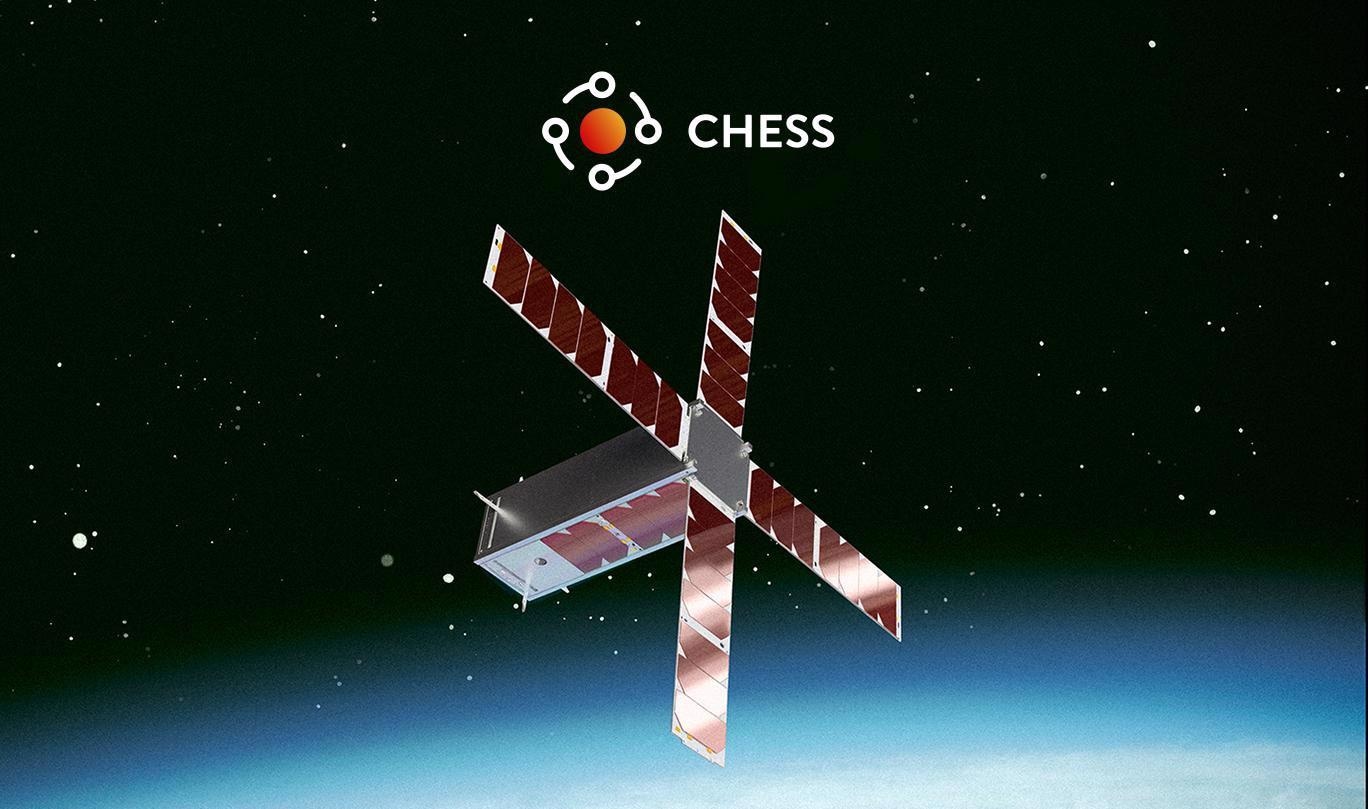Feb 8 2021
The EPFL Spacecraft Team has set an aspiring goal of launching a couple of satellites by 2023. With this daring project, the student team hopes to gain a deeper understanding of the chemical composition of the outermost layers of the Earth’s atmosphere.
 One out of two CHESS satellites. Image Credit: EPFL.
One out of two CHESS satellites. Image Credit: EPFL.
Creating a satellite and launching the same into space is not an ordinary project. Rather, it is one that permanently marks the early careers of the students who participate—and this fact is reinforced by the EPFL students, who developed the SwissCube—a 1U CubeSat (a compact standardized unit that measures 10 x 10 cm) launched earlier in 2009.
Now, the EPFL Spacecraft Team—a new set of students—has embarked on a new challenge. With the help of the EPFL Space Center (eSpace), the student team is designing a constellation of a pair of satellites—known as CHESS—that will be launched in a couple of years. At present, the team is looking for more sponsors and members.
This aspiring initiative has already signed on three companies, six universities, 53 students, and 15 professors.
Both satellites will work together; and these will be a 3U CubeSat bearing both primary and secondary payloads.
The satellites will circle at varying altitudes—one will move in an elliptic orbit at an altitude that oscillates from 400 to 1,000 km, and the other will move in a circular orbit at the low altitude of about 550 km. In March 2023, the constellation will be launched and will remain in flight for a minimum of two years.
This latest initiative will give the students, who take part every year, an opportunity to learn more about the complex space technology and gain the required know-how working on a cross-disciplinary group.
It’s a way to learn the real-world skills required in our industry, like team management, coordination, communication and fundraising. These are skills you can’t learn only from a book. And they will let the students become operational as soon as they start their first job or when and if they decide to start their own business.
Emmanuelle David, Deputy Director, eSpace
Understanding the Exosphere’s Chemistry
Apart from providing valuable experience to students, the CHESS mission will have many other goals. The first goal is scientific.
When both the satellites revolve around the Earth, they will gather comprehensive data about the exosphere—which is the outermost atmospheric layer, beginning at 400 km above the surface of Earth. Since the two satellites will follow individual orbits, they will gather complementary temporal and spatial datasets.
The last time this layer of the atmosphere was analyzed in detail was nearly 40 years ago. So these updated data will be very useful in helping us better understand the exosphere’s chemistry and how it has changed over time, especially in light of global warming.
Dr Rico Fausch, Physicist, Department of Space Research & Planetary Sciences, University of Bern
“They will also let us check whether the upper layers of the atmosphere are indeed cooling as recent studies have suggested—which would be another direct consequence of the accumulation of greenhouse gases around our planet,” Dr Fausch added.
Both satellites will gather comprehensive information on the numerous gases present in the exosphere—that is, oxygen, nitrogen, helium, hydrogen, carbon dioxide, ozone, etc.—as well as their isotopes.
The general objective is to analyze the variations in temperatures, the mechanisms and processes through which atmospheric gases enter into space, and the number of free-floating ions and electrons present in the exosphere.
Molecules are relatively harder to detect at high altitudes when compared to low ones, since separate particles crash and attach together relatively more gradually.
Technological Advancements
The goal of the CHESS mission is also to fuel technological innovations. The two satellites will be fitted with advanced instruments, like the latest mass spectrometers that are jointly being designed by the University of Bern and a firm, called Spacetek—two innovators in this field.
The mass spectrometers will be more efficient and lighter than the ones used early in the 1980s and they will be utilized to detect certain compounds as well as their chemical structures by taking mass measurements.
The two satellites will also include advanced Global Navigation Satellite System (GNSS) receivers that are less costly, lighter, and more precise than present-day versions. Such receivers are now being designed together by ETH Zurich and u-blox.
The receivers will not only capture highly accurate information on the positions of the satellites (on the order of ±1 cm), but will also quantify the number of free-floating electrons and air density.
The CHESS mission will also conduct in situ tests of a novel type of solar panel that are particularly developed for spacecraft, built on the technology designed at RUAG. Since both satellites will transmit radio communications to ground stations, they will help produce a Swiss-wide X-band network—a unique communications network utilizing an ultra-high-frequency radio band.
Switzerland’s Growing Space Industry
I was lucky enough to work with the team that designed, built and launched SwissCube—which is still operational today, some 11 years later. I’ve been following the CHESS project closely for the past two years, and I see that these students are just as skilled, smart and motivated—and are worth believing in and investing in. They’ll send these satellites into orbit, that’s for sure!
Muriel Richard, Aerospace Engineer, Co-Founder, and CTO, ClearSpace
The CHESS project is part of a wider trend of increasing interest in space-industry research and development, at EPFL as well as in Switzerland, as a whole. It will help pull together skills from a broad range of fields, train the next generation of aerospace engineers, extend the prevailing space-industry network, and establish links with the scientific community.